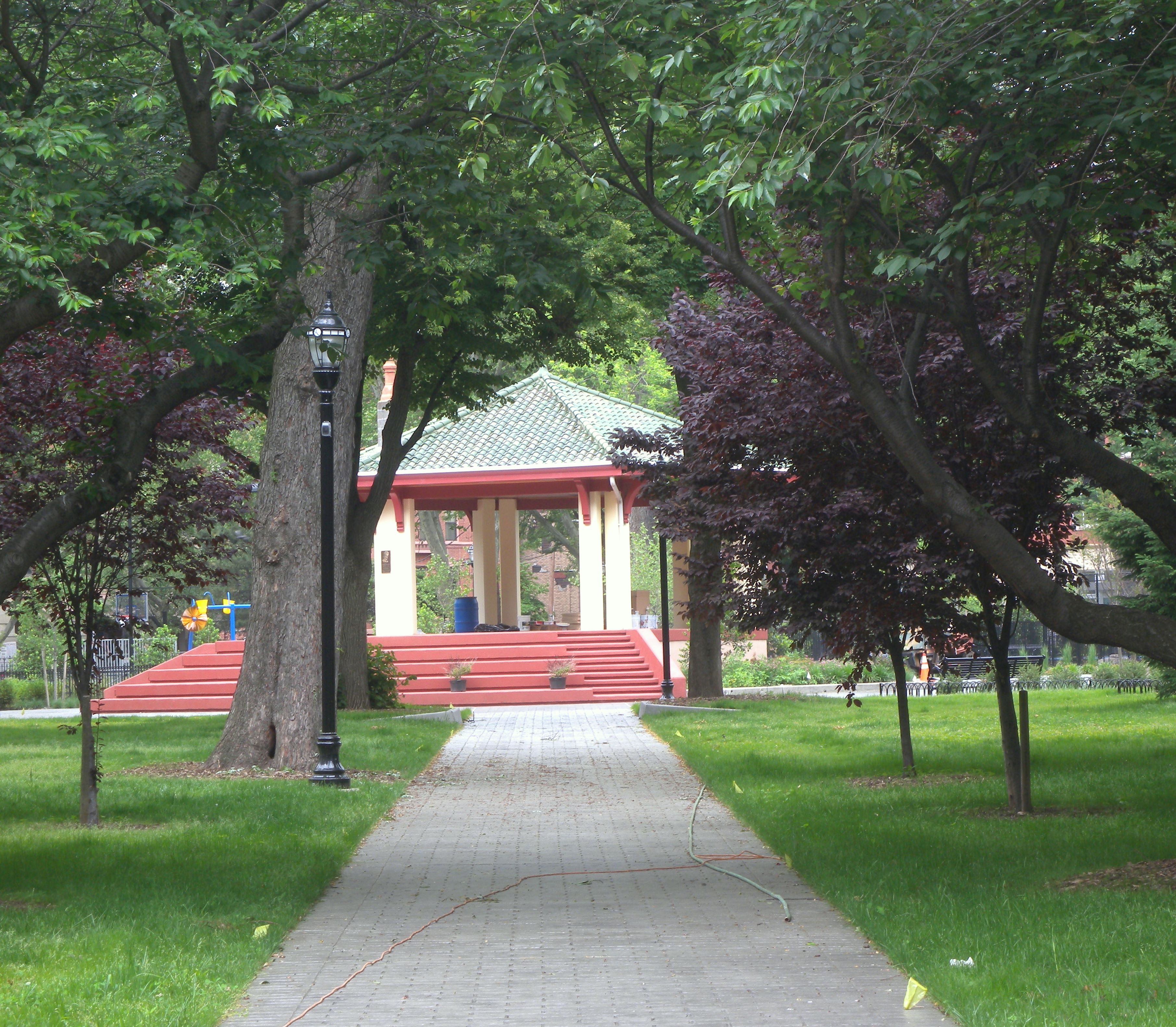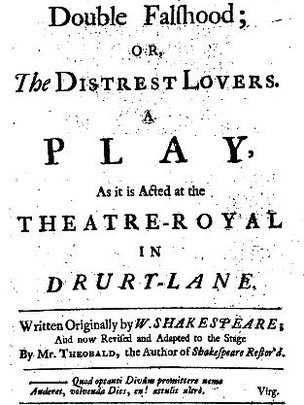|
Hudson Shakespeare Company
The Hudson Shakespeare Company is a regional Shakespeare touring festival based in Jersey City in Hudson County, New Jersey, that produces an annual summer Shakespeare in the Park festival and often features lesser done Shakespeare works such as ''The Two Noble Kinsmen'' and ''Timon of Athens''. The company also produces several modern-day productions in non theatrical venues such as their courtroom shows of '' Inherit the Wind'' and ''A Few Good Men'' in the Hoboken Municipal Courtroom. It produce a yearly educational program that ranges from student workshops to full length Shakespeare productions. History In 1992, Jersey City native L. Robert "Luther" Johnson decided to mount a staged reading of "A Midsummer Night's Dream" in Hamilton Park in Jersey City. Having worked as a technical consultant for such companies as Riverside Shakespeare and New York Gilbert and Sullivan Players in New York, Johnson remarked "I noticed that when you were on one side of the Hudson you couldn't ... [...More Info...] [...Related Items...] OR: [Wikipedia] [Google] [Baidu] |
Jersey City, New Jersey
Jersey City is the second-most populous city in the U.S. state of New Jersey, after Newark.The Counties and Most Populous Cities and Townships in 2010 in New Jersey: 2000 and 2010 , . Accessed November 7, 2011. It is the of and the county's largest city. [...More Info...] [...Related Items...] OR: [Wikipedia] [Google] [Baidu] |
Hackensack, New Jersey
Hackensack is a city in and the county seat of Bergen County, New Jersey, United States.New Jersey County Map New Jersey Department of State. Accessed July 10, 2017. The area was officially named New Barbadoes Township until 1921, but has informally been known as Hackensack since at least the 18th century. As of the , the city's population was 46,030. An |
Coriolanus
''Coriolanus'' ( or ) is a tragedy by William Shakespeare, believed to have been written between 1605 and 1608. The play is based on the life of the legendary Roman leader Caius Marcius Coriolanus. Shakespeare worked on it during the same years he wrote '' Antony and Cleopatra'', making them the last two tragedies written by him. Coriolanus is the name given to a Roman general after his military feats against the Volscians at Corioli. Following his success he seeks to be consul, but his disdain for the plebeians and the mutual hostility of the tribunes lead to his banishment from Rome. He presents himself to the Volscians, then leads them against Rome. Characters ''Romans'' * Caius Marcius – later surnamed Coriolanus * Menenius Agrippa – Senator of Rome * Cominius – consul and commander-in-chief of the army * Titus Larcius – Roman general * Volumnia – Coriolanus' mother (historically, Veturia) * Virgilia – Coriolanus' wife * Young Martius – Coriolanus' son ... [...More Info...] [...Related Items...] OR: [Wikipedia] [Google] [Baidu] |
The Two Noble Kinsmen
''The Two Noble Kinsmen'' is a Jacobean tragicomedy, first published in 1634 and attributed jointly to John Fletcher and William Shakespeare. Its plot derives from "The Knight's Tale" in Geoffrey Chaucer's ''The Canterbury Tales'', which had already been dramatised at least twice before. This play is believed to have been William Shakespeare's final play before he retired to Stratford-upon-Avon and died three years later. Formerly a point of controversy, the dual attribution is now generally accepted by scholarly consensus. Characters * Theseus, Duke of Athens * Palamon, nephew of the King of Thebes * Arcite, nephew of the King of Thebes * Pirithous, an Athenian general * Artesius, an Athenian captain * Valerius, a noble of Thebes * Six Knights * A Herald * A Jailer * Wooer of the jailer's daughter * A Doctor * Brother of the jailer * Friends of the jailer * A Gentleman * Gerrold, a schoolmaster * Hippolyta, wife of Theseus * Emilia, her sister * Three Queens * Jailer's Da ... [...More Info...] [...Related Items...] OR: [Wikipedia] [Google] [Baidu] |
King John (play)
''The Life and Death of King John'', a history play by William Shakespeare, dramatises the reign of John, King of England (ruled 1199–1216), the son of Henry II of England and Eleanor of Aquitaine and the father of Henry III of England. It is believed to have been written in the mid-1590s, but it was not published until 1623, when it appeared in the First Folio. __TOC__ Characters * King John – King of England * Eleanor – the Queen Mother, widow of Henry II * Prince Henry – his son, later King Henry III * Blanche of Castile – John's niece * Earl of Essex – an English nobleman * Earl of Salisbury – an English nobleman * Earl of Pembroke – an English nobleman * Lord Bigot – Earl of Norfolk * Peter of Pomfret – a prophet * Philip Faulconbridge – also known as Philip the Bastard and Sir Richard the Plantagenet; natural son of Richard I of England * Robert Faulconbridge – his half brother; legitimate son of Sir Robert Faulconbridge * Lady ... [...More Info...] [...Related Items...] OR: [Wikipedia] [Google] [Baidu] |
Troilus And Cressida
''Troilus and Cressida'' ( or ) is a play by William Shakespeare, probably written in 1602. At Troy during the Trojan War, Troilus and Cressida begin a love affair. Cressida is forced to leave Troy to join her father in the Greek camp. Meanwhile, the Greeks endeavour to lessen the pride of Achilles. The tone alternates between bawdy comedy and tragic gloom. Readers and theatre-goers have frequently found it difficult to understand how they are meant to respond to the characters. Frederick S. Boas has labelled it one of Shakespeare's problem plays. In recent years it has "stimulated exceptionally lively critical debate". Characters The Trojans * Priam, King of Troy * Priam's children: Cassandra (a prophetess), Hector, Troilus, Paris, Deiphobus, Helenus, and Margarelon (bastard) * Andromache, Hector's wife * Aeneas, a commander and leader * Antenor, another commander * Calchas, a Trojan priest who is taking part with the Greeks * Cressida, Calchas's daughter * Alexander, ... [...More Info...] [...Related Items...] OR: [Wikipedia] [Google] [Baidu] |
Double Falsehood
''Double Falsehood'' (archaic spelling: ''Double Falshood'') or ''The Distrest Lovers'' is a 1727 play by the English writer and playwright Lewis Theobald, although the authorship has been contested ever since the play was first published, with some scholars considering that it may have been written by John Fletcher and William Shakespeare. Editors of the Association for Psychological Science. ''Shakespeare’s Plays Reveal His Psychological Signature''. Association for Psychological Science. 9 April 2015. Some authors believe that it may be an adaptation of a lost play by Shakespeare and Fletcher known as ''''. Theobald himself claimed h ... [...More Info...] [...Related Items...] OR: [Wikipedia] [Google] [Baidu] |
The History Of Cardenio
''The History of Cardenio'', often referred to as simply ''Cardenio'', is a lost play, known to have been performed by the King's Men, a London theatre company, in 1613. The play is attributed to William Shakespeare and John Fletcher in a Stationers' Register entry of 1653. The content of the play is not known, but it was likely to have been based on an episode in Miguel de Cervantes's ''Don Quixote'' involving the character Cardenio, a young man who has been driven mad and lives in the Sierra Morena. Thomas Shelton's translation of the First Part of ''Don Quixote'' was published in 1612 and would thus have been available to the presumed authors of the play. Two existing plays have been put forward as being related to the lost play. A song, "Woods, Rocks and Mountains", set to music by Robert Johnson, has also been linked to it. Attribution Although there are records of the play having been performed, there is no information about its authorship earlier than a 1653 entry in th ... [...More Info...] [...Related Items...] OR: [Wikipedia] [Google] [Baidu] |
Henry VIII (play)
''Henry VIII'' is a collaborative history play, written by William Shakespeare and John Fletcher, based on the life of Henry VIII. An alternative title, , is recorded in contemporary documents, with the title not appearing until the play's publication in the First Folio of 1623. Stylistic evidence indicates that individual scenes were written by either Shakespeare or his collaborator and successor, John Fletcher. It is also somewhat characteristic of the late romances in its structure. It is noted for having more stage directions than any of Shakespeare's other plays. During a performance of ''Henry VIII'' at the Globe Theatre in 1613, a cannon shot employed for special effects ignited the theatre's thatched roof (and the beams), burning the original Globe building to the ground. Characters * Prologue/Epilogue * Henry VIII – King of England * Cardinal Wolsey – Archbishop of York and Lord Chancellor; initially, Henry's chief adviser * Queen Katherine – later d ... [...More Info...] [...Related Items...] OR: [Wikipedia] [Google] [Baidu] |
Arden Of Faversham
''Arden of Faversham'' (original spelling: ''Arden of Feversham'') is an Elizabethan play, entered into the Register of the Stationers Company on 3 April 1592, and printed later that same year by Edward White. It depicts the real-life murder of Thomas Arden by his wife Alice Arden and her lover, and their subsequent discovery and punishment. The play is notable as perhaps the earliest surviving example of domestic tragedy, a form of Renaissance play which dramatized recent and local crimes rather than far-off and historical events. The author is unknown, and the play has been attributed to Thomas Kyd, Christopher Marlowe, and William Shakespeare, solely or collaboratively, forming part of the Shakespeare Apocrypha. The use of computerized stylometrics has kindled academic interest in determining the authorship. The 2016 edition of The Oxford Shakespeare attributes the play to Shakespeare together with an anonymous collaborator, and rejects the possibility of authorship by Ky ... [...More Info...] [...Related Items...] OR: [Wikipedia] [Google] [Baidu] |
Edward III (play)
''The Raigne of King Edward the Third'', commonly shortened to ''Edward III'', is an Elizabethan play printed anonymously in 1596, and probably partly written by William Shakespeare. It began to be included in publications of the complete works of Shakespeare only in the late 1990s. Scholars who have supported this attribution include Jonathan Bate, Edward Capell, Eliot Slater, Eric Sams, Giorgio Melchiori,Melchiori, Giorgio, ed. ''The New Cambridge Shakespeare: King Edward III'', 1998, p. 2. and Brian Vickers. The play's co-author remains the subject of debate: suggestions have included Thomas Kyd, Christopher Marlowe, Michael Drayton, Thomas Nashe, and George Peele. The play contains several gibes at Scotland and the Scottish people, which has led some critics to think that it is the work that incited George Nicholson, Queen Elizabeth's agent in Edinburgh, to protest against the portrayal of Scots on the London stage in a 1598 letter to William Cecil, Lord Burghley. This ... [...More Info...] [...Related Items...] OR: [Wikipedia] [Google] [Baidu] |
Fort Lee, New Jersey
Fort Lee is a borough at the eastern border of Bergen County, in the U.S. state of New Jersey, situated along the Hudson River atop the Palisades. As of the 2020 U.S. census, the borough's population was 40,191. As of the 2010 U.S. census, the borough's population was 35,345,DP-1 – Profile of General Population and Housing Characteristics: 2010 for Fort Lee borough, Bergen County, New Jersey , . Accessed February 5, 2012. reflecting a decline of 116 (−0.3%) from the 35,461 counted in the ... [...More Info...] [...Related Items...] OR: [Wikipedia] [Google] [Baidu] |



.jpg)






